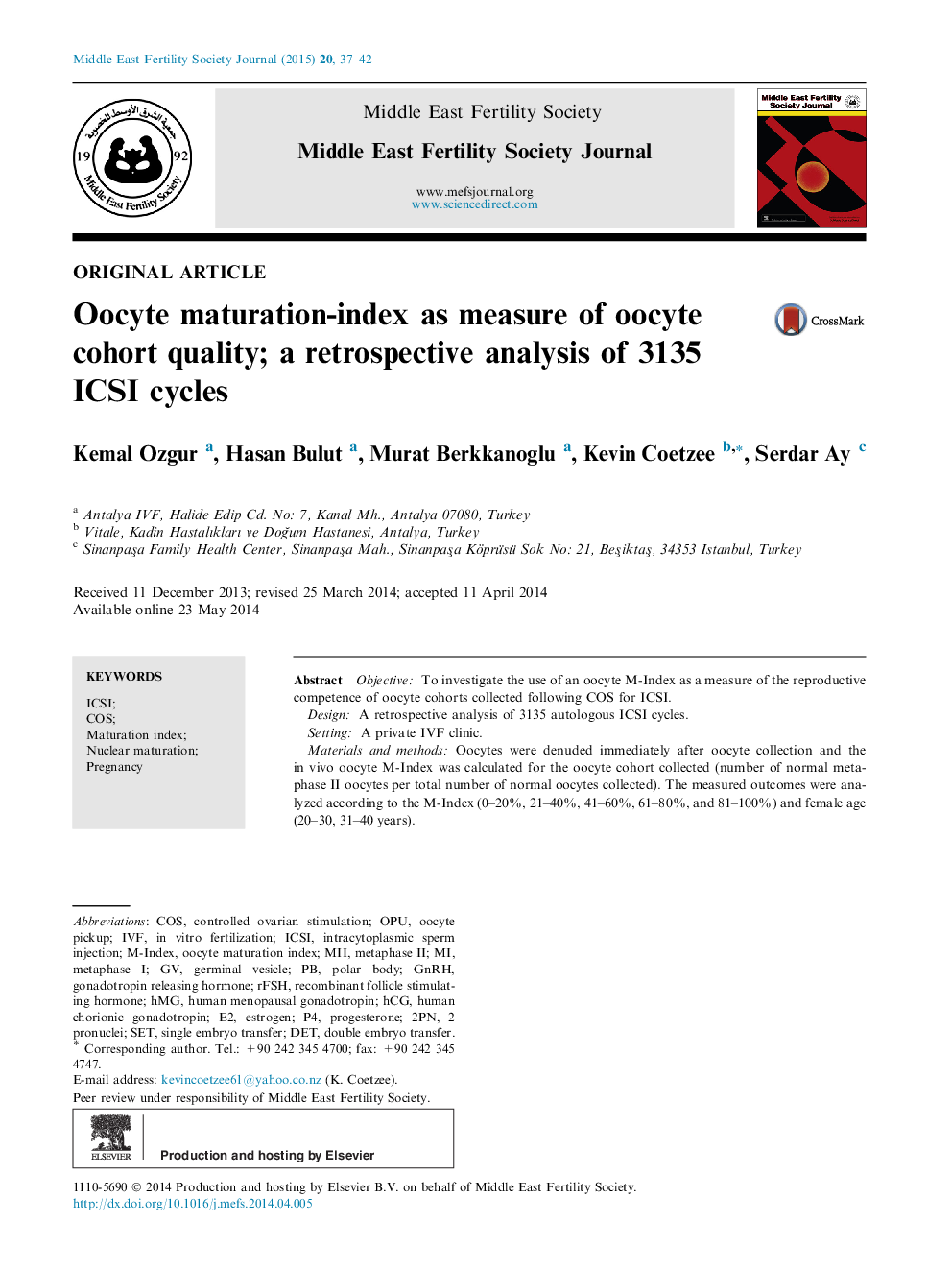| Article ID | Journal | Published Year | Pages | File Type |
|---|---|---|---|---|
| 3966187 | Middle East Fertility Society Journal | 2015 | 6 Pages |
ObjectiveTo investigate the use of an oocyte M-Index as a measure of the reproductive competence of oocyte cohorts collected following COS for ICSI.DesignA retrospective analysis of 3135 autologous ICSI cycles.SettingA private IVF clinic.Materials and methodsOocytes were denuded immediately after oocyte collection and the in vivo oocyte M-Index was calculated for the oocyte cohort collected (number of normal metaphase II oocytes per total number of normal oocytes collected). The measured outcomes were analyzed according to the M-Index (0–20%, 21–40%, 41–60%, 61–80%, and 81–100%) and female age (20–30, 31–40 years).Main outcomesClinical pregnancy.Results60,955 oocytes were collected from the 3135 ICSI cycles, 57,214 (93.9%) were normal and 39,364 (68.8%) of these were metaphase II oocytes. 71.6% of metaphase I oocytes reached nuclear maturity by the time of the ICSI procedure. Trend analyses of fertilization and clinical pregnancy to M-Index showed that fertilization increased significantly (p < 0.0001) with an increasing M-Index, from 64.0% (M-Index 0–20%) to 78.1% (M-Index 81–100%) as well as clinical pregnancy (p < 0.001) from 23.3% to 48.1%. No predictive threshold value could be determined from the data using ROC analysis. Analyzing the data across a 40% M-Index cut-point, both embryology and clinical pregnancy outcomes were significantly higher for cycles with an M-Index of >40%.ConclusionOur analysis shows that a simple maturation index calculated at the time of oocyte collection in a given ICSI cycle provides important prognostic information with regard to potential pregnancy outcomes and may reflect the importance of cytoplasmic maturation in oocyte competence.
